Material de grado M2M2, un acero rápido (HSS) ampliamente reconocido por su excepcional equilibrio entre dureza, resistencia al desgaste y rendimiento de corte, destaca como la mejor opción en el mundo de la fabricación. Tanto si trabaja en el sector aeroespacial como en el de la automoción o la ingeniería de precisión, conocer los matices del material de calidad M2 puede mejorar los resultados de sus proyectos.
Esta completa guía profundiza en el material de grado M2, explorando su composición, características y aplicaciones, junto con una comparación de modelos específicos de polvo metálico. Tanto si es un ingeniero experimentado como si es la primera vez que explora los materiales, este artículo está diseñado para atraer e informar.
Visión general del material de grado M2
El material de calidad M2 es un acero versátil de alta velocidad muy utilizado en aplicaciones de herramientas y matrices. Está compuesto principalmente de tungsteno y molibdeno, con una mezcla equilibrada de carbono, cromo, vanadio y cobalto, lo que lo hace ideal para cortar y dar forma a materiales duros a altas velocidades. El acero M2 es conocido por su excelente tenacidad, dureza al rojo (mantiene la dureza a altas temperaturas) y resistencia al desgaste, lo que lo convierte en la elección preferida de las industrias que exigen materiales de alto rendimiento.
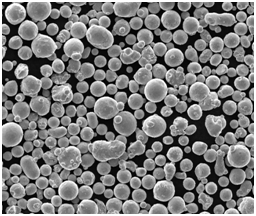
Composición del material de grado M2
La composición del material de calidad M2 es crucial para su rendimiento. He aquí un desglose de los elementos típicos que se encuentran en el acero de calidad M2:
| Elemento | Composición (%) | Papel en el material |
|---|---|---|
| Carbono (C) | 0.78-0.88 | Aumenta la dureza y la resistencia, en particular la resistencia al desgaste. |
| Cromo (Cr) | 3.75-4.50 | Mejora la resistencia a la corrosión, la dureza y la tenacidad. |
| Tungsteno (W) | 5.50-6.75 | Proporciona dureza al rojo, lo que permite al acero mantener su dureza a altas temperaturas. |
| Molibdeno (Mo) | 4.50-5.50 | Mejora la resistencia a altas temperaturas y la tenacidad, al tiempo que contribuye a la formación de carburos para la resistencia al desgaste. |
| Vanadio (V) | 1.75-2.20 | Contribuye a la resistencia al desgaste y a la tenacidad general mediante la formación de carburos finos. |
| Cobalto (Co) | 0.00-1.00 | Opcional, mejora la resistencia al desgaste y al calor. |
| Hierro (Fe) | Saldo | El elemento base, que proporciona integridad estructural a la aleación. |
Estos elementos contribuyen colectivamente a la reconocida durabilidad y rendimiento del material, especialmente en aplicaciones que implican altas velocidades y condiciones extremas.
Características de Material de grado M2
El acero de grado M2 es venerado por su equilibrio entre tenacidad y dureza, lo que lo convierte en la opción ideal para aplicaciones de gran esfuerzo. Veamos cuáles son sus principales características:
1. Dureza y resistencia al desgaste
El acero de calidad M2 presenta una dureza excelente, normalmente entre 62 y 65 HRC (escala de dureza Rockwell), lo que lo hace muy resistente al desgaste y la deformación. Esto lo hace perfecto para herramientas de corte que requieren un afilado duradero.
2. Dureza al rojo
Una de las características más destacadas del acero M2 es su dureza al rojo, es decir, su capacidad para mantener la dureza a temperaturas elevadas. Esto hace que el M2 sea adecuado para operaciones de alta velocidad en las que la herramienta se calienta debido a la fricción.
3. Dureza
A pesar de su elevada dureza, el material de grado M2 mantiene una excelente tenacidad, lo que reduce el riesgo de astillado y agrietamiento durante las operaciones de alto esfuerzo. Este equilibrio entre dureza y tenacidad garantiza la longevidad de las herramientas fabricadas con acero M2.
4. Maquinabilidad
El acero de calidad M2, aunque más duro que otros aceros para herramientas, ofrece una buena maquinabilidad, especialmente cuando está recocido. Esto permite a los fabricantes moldear y dar forma a herramientas y componentes precisos.
5. Resistencia a la deformación
Incluso sometido a esfuerzos extremos, el acero de calidad M2 resiste la deformación, lo que garantiza un rendimiento constante en entornos exigentes.
Aplicaciones del material de calidad M2
El material de calidad M2 se utiliza en un amplio espectro de industrias gracias a su versatilidad y fiabilidad. Estas son algunas de sus principales aplicaciones:
| Industria | Solicitud | Descripción |
|---|---|---|
| Aeroespacial | Herramientas de corte | Se utiliza en la fabricación de componentes de motores a reacción, herramientas de corte y equipos de perforación. |
| Automotor | Componentes del motor | Ideal para fabricar piezas duraderas y resistentes al calor, como válvulas de motor, engranajes y árboles de levas. |
| Fabricación | Fresas | Comúnmente utilizado en la producción de fresas, machos y brocas. |
| Fabricación de herramientas y matrices | Punzones y matrices | La dureza y resistencia al desgaste del acero de calidad M2 lo hacen perfecto para punzones, matrices y otras herramientas de conformado. |
| Petróleo y gas | Equipos de perforación | Se utiliza en equipos de perforación que requieren gran tenacidad y resistencia al desgaste en entornos difíciles. |
| Metalurgia | Hojas de sierra | Las hojas de sierra de alta velocidad se benefician de la dureza del M2 y de su capacidad para mantener el filo. |
| Ingeniería de precisión | Calibres e instrumentos de medida | Se utiliza en herramientas de precisión en las que es crucial mantener la exactitud dimensional. |
| Construcción | Taladros de albañilería | Ideal para taladros de albañilería y otras herramientas que requieren gran resistencia al desgaste y tenacidad en condiciones abrasivas. |
| Electrónica | Disipadores térmicos para sistemas de alto rendimiento | Se utiliza en aplicaciones de gestión térmica debido a su capacidad para mantener la integridad estructural a altas temperaturas. |
| Industria textil | Cuchillas de corte | Perfecta para cortar tejidos y otros materiales que exigen cuchillas afiladas y resistentes al desgaste. |
La diversidad de aplicaciones subraya la adaptabilidad y fiabilidad del material de grado M2 en diversos sectores exigentes y de alto rendimiento.
Especificaciones, tamaños, calidades y normas
A la hora de seleccionar material de calidad M2, es esencial conocer las especificaciones, tamaños, calidades y normas disponibles. He aquí un análisis detallado:
| Especificación | Detalles |
|---|---|
| ASTM A600 | Especificación estándar para aceros rápidos para herramientas, incluido el material de calidad M2. |
| DIN 1.3343 | Norma europea equivalente al acero de calidad M2, utilizada a menudo en contextos internacionales. |
| JIS SKH51 | Norma japonesa, similar a la M2, muy utilizada en los mercados asiáticos. |
| ISO 4957 | Norma internacional para aceros para herramientas, incluida la calidad M2. |
| Tallas disponibles | Normalmente disponible en barras redondas, barras planas y barras cuadradas, desde 6 mm hasta 250 mm. |
| Grados de dureza | Típicamente 62-65 HRC, aunque existen calidades inferiores para aplicaciones específicas. |
| Tolerancias | Tolerancias estrictas para componentes de precisión, a menudo de hasta +/- 0,05 mm según el grado. |
Comprender estas especificaciones ayuda a elegir el material de grado M2 adecuado para sus necesidades específicas, garantizando el cumplimiento de las normas del sector y logrando las características de rendimiento deseadas.


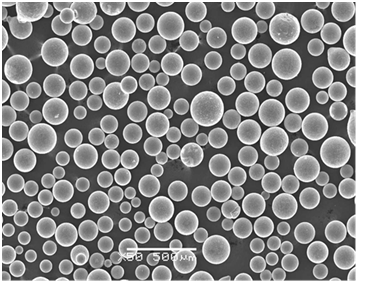
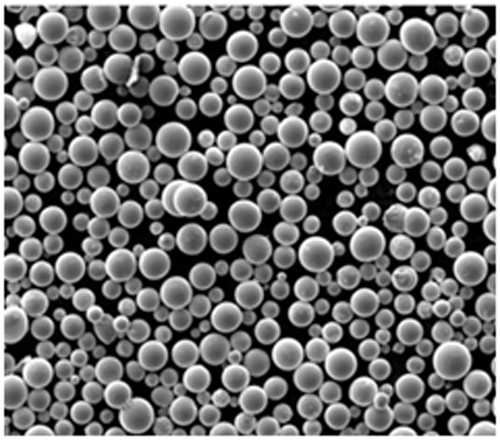
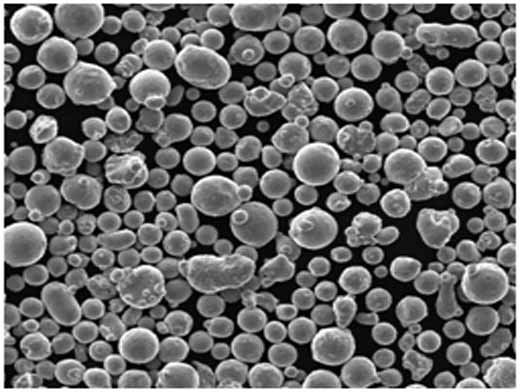
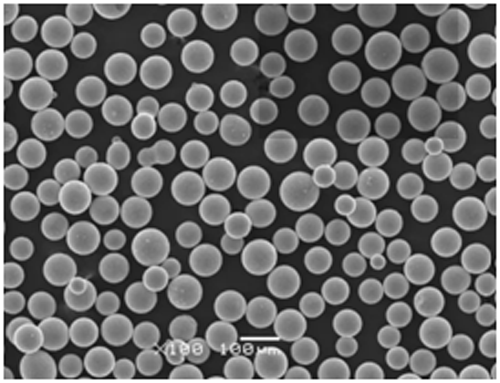
Modelos específicos de polvo metálico para Material de grado M2
Cuando se trata de pulvimetalurgia y fabricación aditiva, es crucial seleccionar el modelo de polvo metálico adecuado. A continuación se presentan algunos modelos específicos de polvo metálico de grado M2, cada uno con propiedades y aplicaciones únicas:
| Modelo en polvo | Descripción | Aplicaciones Típicas |
|---|---|---|
| M2-22A | Polvo de grano fino y gran pureza para componentes de precisión. | Herramientas de precisión, componentes aeroespaciales. |
| M2-24B | Mayor fluidez, ideal para geometrías complejas en impresión 3D. | Fabricación aditiva, fundición intrincada. |
| M2-26C | Alta densidad, optimizada para la resistencia al desgaste en aplicaciones pesadas. | Automoción, maquinaria industrial. |
| M2-30D | Bajo contenido en oxígeno, lo que garantiza excelentes propiedades mecánicas. | Herramientas de corte de alto rendimiento. |
| M2-32E | Mezcla de aleación personalizada para mejorar la resistencia y reducir la fragilidad. | Herramientas para condiciones extremas, petróleo y gas. |
| M2-35F | Variante con alto contenido en carbono para una mayor dureza y retención del filo. | Hojas de sierra de alta velocidad, cuchillas de precisión. |
| M2-38G | Partículas de tamaño nanométrico para un acabado superficial y una precisión superiores en micromecanizado. | Microherramientas, componentes electrónicos. |
| M2-40H | Modificado para mejorar la dureza al rojo, perfecto para aplicaciones de alta temperatura. | Componentes de motores a reacción, taladros de alta velocidad. |
| M2-42I | Optimizado para la gestión térmica en electrónica de alto rendimiento. | Disipadores térmicos en electrónica. |
| M2-45J | Polvo ultrafino para prototipado rápido e impresión 3D de alta precisión. | Creación de prototipos, producción de moldes complejos. |
Cada uno de estos modelos de polvo metálico está diseñado para aplicaciones industriales específicas y ofrece una gama de propiedades que se adaptan a las distintas necesidades de fabricación.
Proveedores y precios del material de calidad M2
Seleccionar el proveedor adecuado es crucial para obtener material de calidad M2. He aquí una lista de algunos de los principales proveedores, junto con los precios habituales:
| Proveedor | Región | Oferta de productos | Precios (aprox.) |
|---|---|---|---|
| Tecnología Carpenter | Norteamérica | Aceros rápidos, incluidos varios grados M2. | 10-15 $ por kg |
| Kennametal | Global | Aceros para herramientas de calidad M2 y productos afines. | 12-18 $ por kg |
| A. Finkl & Sons Co. | Norteamérica | Aceros para herramientas de alto rendimiento, incluido el M2. | 11-16 $ por kg |
| Bohler-Uddeholm | Europa/Global | Acero de calidad M2 en varias formas y tamaños. | 10-14 euros por kg |
| Hitachi Metales | Asia/Global | Polvos de acero rápido, incluido M2. | entre 1.500 y 2.000 yenes por kilo |
| SSAB | Europa/Global | Aceros para herramientas y material de calidad M2. | 100-150 SEK por kg |
| Thyssenkrupp | Global | Acero de calidad M2 y otros materiales especiales. | 14-20 $ por kg |
| Acerinox | Europa | Aceros inoxidables y para herramientas, incluidas opciones de grado M2. | entre 12 y 17 euros por kg |
| Alloy Steel International | Norteamérica | Diversos aceros rápidos y para herramientas, incluido el M2. | entre 13 y 19 dólares por kg |
| Voestalpine | Global | Aceros para herramientas, incluidos los materiales de calidad M2. | 11-16 euros por kg |
Nota: Los precios pueden variar en función de la cantidad del pedido, la forma (p. ej., barras, láminas, polvos) y las condiciones del mercado regional. Siempre es mejor ponerse en contacto directamente con los proveedores para obtener presupuestos y disponibilidad más precisos.
Comparación del material de grado M2: Ventajas e inconvenientes
El material de calidad M2 es famoso por su alto rendimiento, pero como cualquier material, tiene sus puntos fuertes y débiles. He aquí una comparación detallada de las ventajas y limitaciones del acero de calidad M2:
| Aspecto | Ventajas | Desventajas |
|---|---|---|
| Dureza | Excelente dureza (62-65 HRC) que mejora el rendimiento de corte. | Puede ser quebradizo si no se trata térmicamente de forma adecuada. |
| Resistencia al desgaste | Resistencia superior al desgaste gracias a su alto contenido en carbono y carburo. | Coste más elevado en comparación con otros aceros para herramientas. |
| Dureza del rojo | Mantiene la dureza a altas temperaturas, ideal para el corte a alta velocidad. | No apto para todo tipo de aplicaciones de alta temperatura. |
| Dureza | Buen equilibrio entre tenacidad y dureza, reduciendo el astillado. | Puede ser más difícil de mecanizar que los aceros más blandos. |
| Maquinabilidad | Buena maquinabilidad en recocido. | Requiere un tratamiento térmico preciso para conseguir propiedades óptimas. |
| Coste | Precios competitivos para las prestaciones ofrecidas. | Mayor coste del material en comparación con algunos aceros rápidos. |
| Versatilidad | Ampliamente utilizado en diversas aplicaciones, desde la industria aeroespacial hasta la automovilística. | Es posible que no se disponga fácilmente de grados y formularios específicos. |
Comprender estos pros y contras ayuda a seleccionar el material de grado M2 para la aplicación adecuada y a equilibrar el rendimiento con el coste.

preguntas frecuentes
Aquí tiene una recopilación de las preguntas más frecuentes sobre el material de grado M2:
| Pregunta | Respuesta |
|---|---|
| ¿Para qué se utiliza el material de calidad M2? | El material de calidad M2 se utiliza para fabricar herramientas de corte, matrices, punzones y otros componentes de alto rendimiento. |
| ¿Cómo se compara el material de calidad M2 con otros aceros rápidos? | El M2 ofrece un buen equilibrio entre dureza, tenacidad y resistencia al desgaste, pero otros grados como el M42 pueden ofrecer una mayor dureza a expensas de la tenacidad. |
| ¿Cuál es la dureza típica del acero de calidad M2? | El acero de calidad M2 suele tener una dureza de 62-65 HRC. |
| ¿Puede utilizarse material de calidad M2 para aplicaciones de alta temperatura? | Sí, el material de grado M2 es conocido por su dureza al rojo, lo que lo hace adecuado para aplicaciones de alta velocidad y alta temperatura. |
| ¿Cómo debe tratarse térmicamente el material de calidad M2? | El acero de calidad M2 debe tratarse térmicamente según procesos específicos para alcanzar la dureza y tenacidad deseadas. |
| ¿Cuáles son las formas más comunes de material de grado M2? | El material de calidad M2 está disponible en forma de barras redondas, barras planas y chapas. |
| ¿Dónde puedo comprar material de calidad M2? | El material de grado M2 puede adquirirse a proveedores como Carpenter Technology, Kennametal y otros de la lista anterior. |
| ¿Es el material de calidad M2 más caro que otros aceros? | El material de calidad M2 puede ser más caro que algunos aceros para herramientas debido a sus características de alto rendimiento. |
Conclusión
Material de grado M2 destaca en el ámbito de los aceros rápidos por su extraordinaria combinación de dureza, resistencia al desgaste y dureza al rojo. Su capacidad para mantener el rendimiento a altas temperaturas y bajo tensión lo convierte en la opción preferida para una amplia gama de aplicaciones, desde componentes aeroespaciales hasta herramientas de corte.
Si conoce su composición, sus características y los modelos específicos de polvos metálicos disponibles, podrá tomar decisiones con conocimiento de causa sobre cómo utilizar eficazmente el material de grado M2. Tanto si selecciona un proveedor como si lo compara con otros materiales, conocer a fondo sus ventajas y limitaciones le ayudará a obtener los mejores resultados en sus proyectos.
No dude en explorar las secciones detalladas anteriores para profundizar en los detalles del material de calidad M2 y cómo puede satisfacer sus necesidades.

